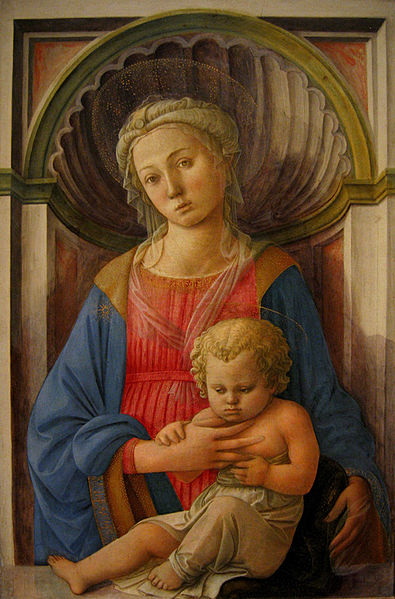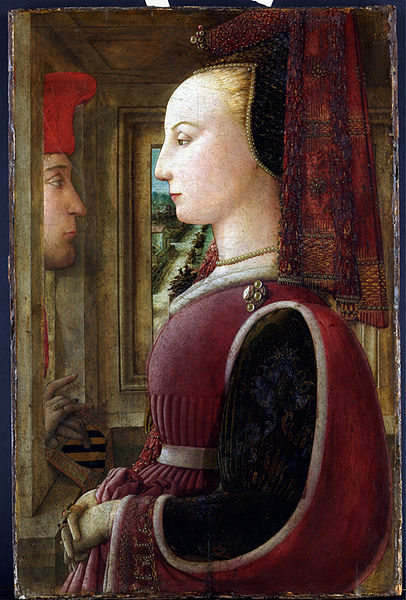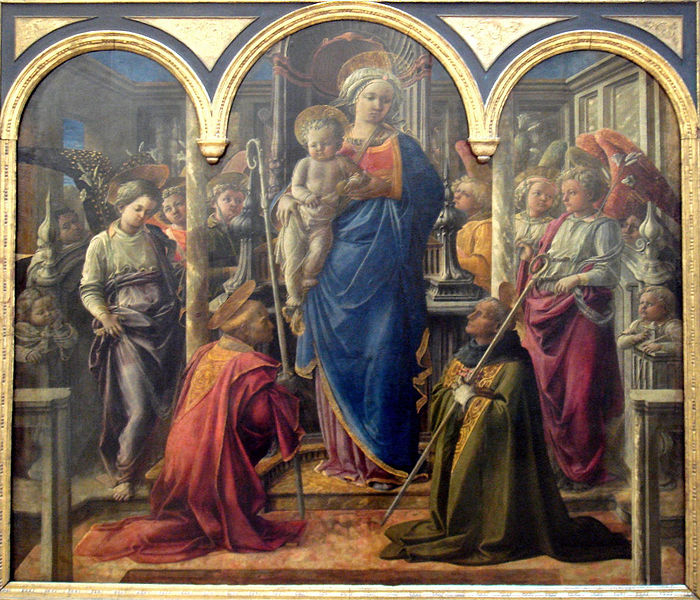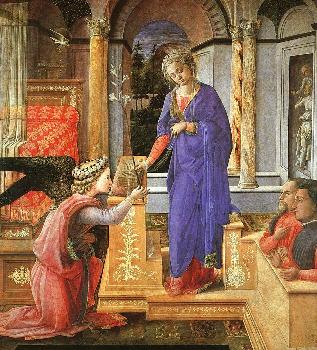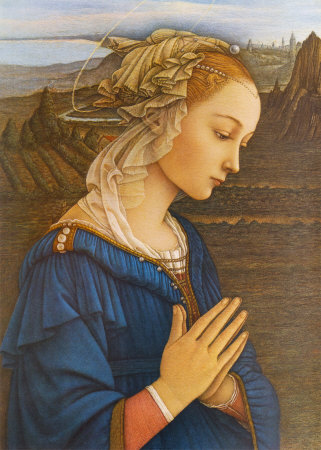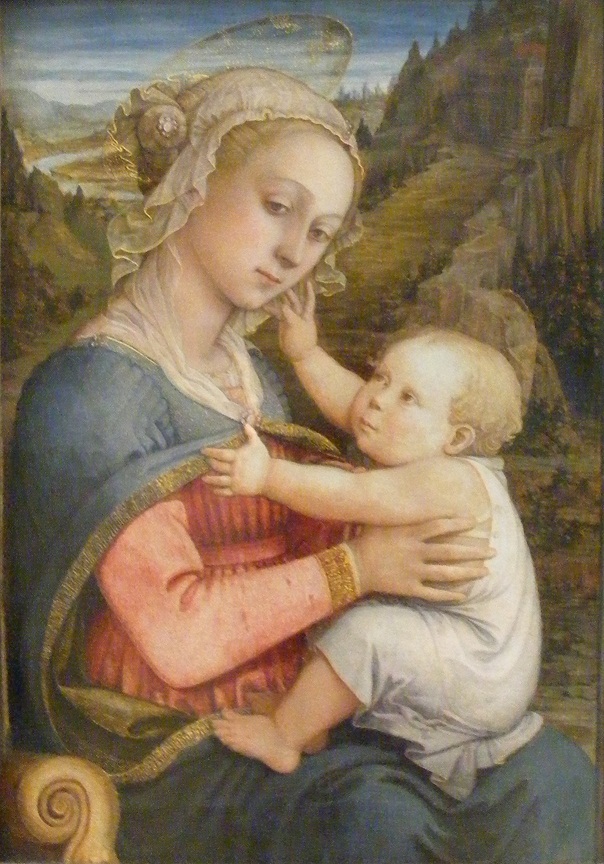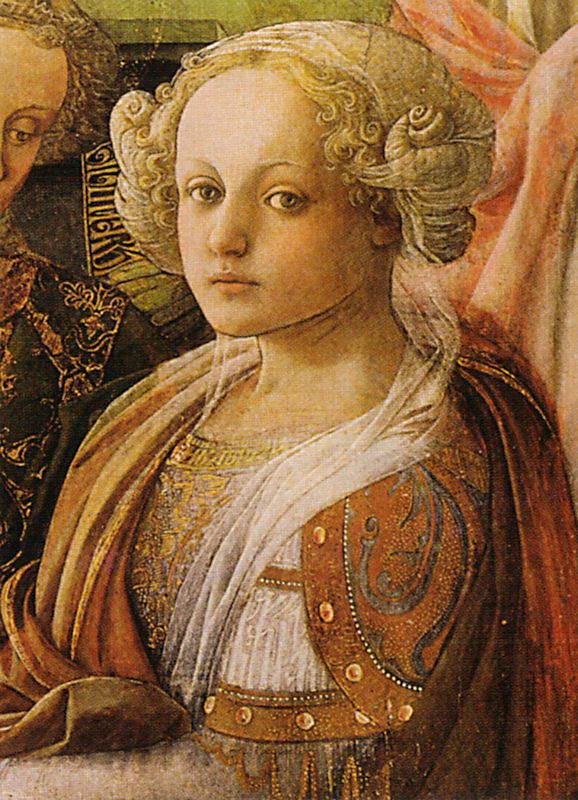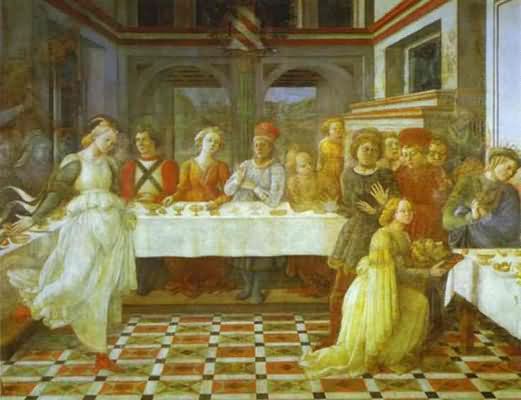<Back to Index>
- Painter Fra Filippo Lippi, 1406
PAGE SPONSOR
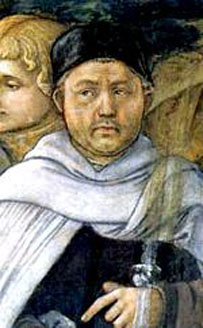
Fra' Filippo Lippi (c. 1406 – 8 October 1469), also called Lippo Lippi, was an Italian painter of the Italian Quattrocento (15th century).
Lippi was born in Florence to Tommaso, a butcher. Both his parents died when he was still a child. Mona Lapaccia, his aunt, took charge of the boy. In 1420 he was registered in the community of the Carmelite friars of the Carmine in Florence, where he remained until 1432, taking the Carmelite vows in 1421 when he was sixteen. In his Lives of the Artists, Vasari says: "Instead of studying, he spent all his time scrawling pictures on his own books and those of others." The prior decided to give him the opportunity to learn painting.
Eventually Fra Filippo quit the monastery, but it appears he was not released from his vows; in a letter dated 1439 he describes himself as the poorest friar of Florence, charged with the maintenance of six marriageable nieces. In 1452 he was appointed chaplain to the convent of S. Giovannino in Florence, and in 1457 rector (Rettore Commendatario) of S. Quirico in Legania, and made occasional, considerable profits; but his poverty seems chronic, his money being spent, according to one account, in frequent amours.
Vasari relates Lippi's visits to Ancona and Naples, his capture by Barbary pirates and enslavement in Barbary, where his skill in portrait sketching helped to release him. From 1431 to 1437 his career is not accounted for.
In June 1456 Fra Filippo is recorded as living in Prato (near
Florence) to paint frescoes in the choir of the cathedral. In 1458,
while engaged in this work, he set about painting a picture for the
convent chapel of S. Margherita of Prato where he met Lucrezia Buti,
the beautiful daughter of a Florentine named Francesco Buti; she was
either a novice or a young lady placed under the nuns' guardianship.
Lippi asked that she might be permitted to sit for the figure of the
Madonna (or perhaps S. Margherita). Under that pretext, Lippi engaged
in sexual relations with her, abducted her to his own house, and kept
her there despite the nuns' efforts to reclaim her. The result was
their son Filippino Lippi,
who became a painter no less famous than his father. Such is Vasari's
narrative, published less than a century after the alleged events.
The frescoes in the choir of the cathedral of Prato, which depict the stories of St. John the Baptist and St. Stephen on the two main facing walls, are considered Fra Filippo's most important and monumental works, particularly the figure of Salome dancing, which has clear affinities with later works by Sandro Botticelli, his pupil, and Filippino Lippi, his son, as well as the scene showing the ceremonial mourning over Stephen's corpse. This latter is believed to contain a portrait of the painter, but there are various opinions as to which is the exact figure. On the end wall of the choir are S. Giovanni Gualberto and S. Alberto, while the vault has monumental representations of the four evangelists.
The close of Lippi's life was spent at Spoleto, where he had been commissioned to paint, for the apse of the cathedral, scenes from the life of the Virgin. In the semidome of the apse is the Christ Crowning the Madonna, with angels, sibyls and prophets. This series, which is not wholly equal to the one at Prato, was completed by Fra Diamante after Lippi's death. That Lippi died in Spoleto, on or about the 8th of October 1469, is a fact; the mode of his death is a matter of dispute. It has been said that the pope granted Lippi a dispensation for marrying Lucrezia, but before the permission arrived, Lippi had been poisoned by the indignant relatives of either Lucrezia herself or some lady who had replaced her in the inconstant painter's affections.
The altarpiece Lippi painted in 1441 for the nuns of S. Ambrogio is now a prominent attraction in the Academy of Florence, and was celebrated in Browning's well known poem. It represents the coronation of the Virgin among angels and saints, including many Bernardine monks. One of these, placed to the right, is a half - length portrait of Lippo, pointed out by the inscription perfecit opus upon an angel's scroll. The price paid for this work in 1447 was 1200 Florentine lire, which seems surprisingly large.
For Germiniano Inghirami of Prato he painted the Death of St. Bernard. His principal altarpiece in this city is a Nativity in the refectory of S. Domenico — the Infant on the ground adored by the Virgin and Joseph, between Saints George and Dominic, in a rocky landscape, with the shepherds playing and six angels in the sky. In the Uffizi is a fine Virgin adoring the infant Christ, who is held by two angels; in the National Gallery, London, a Vision of St Bernard. The picture of the Virgin and Infant with an Angel, in this same gallery, also ascribed to Lippi, is disputable.
Filippo Lippi died in 1469 while working on the frescoes of Scenes of the life of the Virgin Mary, 1467 – 1469 in the apse of the Spoleto Cathedral.
The Frescos show the Annunciation, the Funeral, the Adoration of the
Child and the Coronation of the Virgin. A group of bystanders at the
Funeral includes a self - portrait of Lippi together with his son
Filippino and his helpers Fra Diamante and Pier Matteo d'Amelia.
Lippi was buried on the right side of the transept, with a monument
commissioned by Lorenzo de' Medici and executed by his son Filippino
and others; he had always been zealously patronized by the Medici
family, beginning with Cosimo de' Medici. Francesco di Pesello (called Pesellino) and Sandro Botticelli were among his most distinguished pupils.
